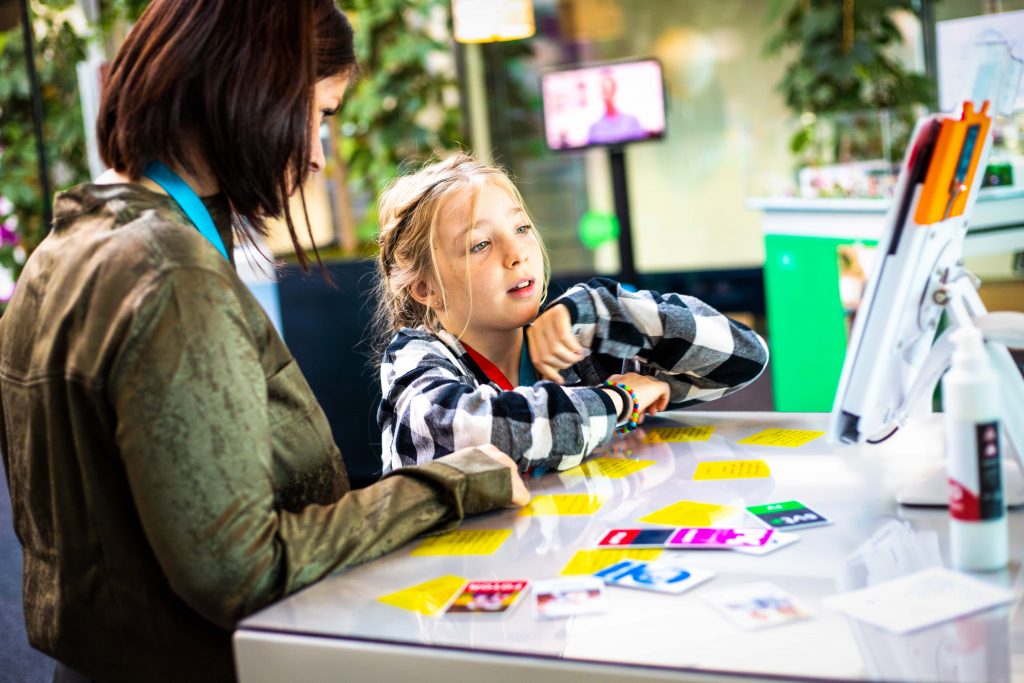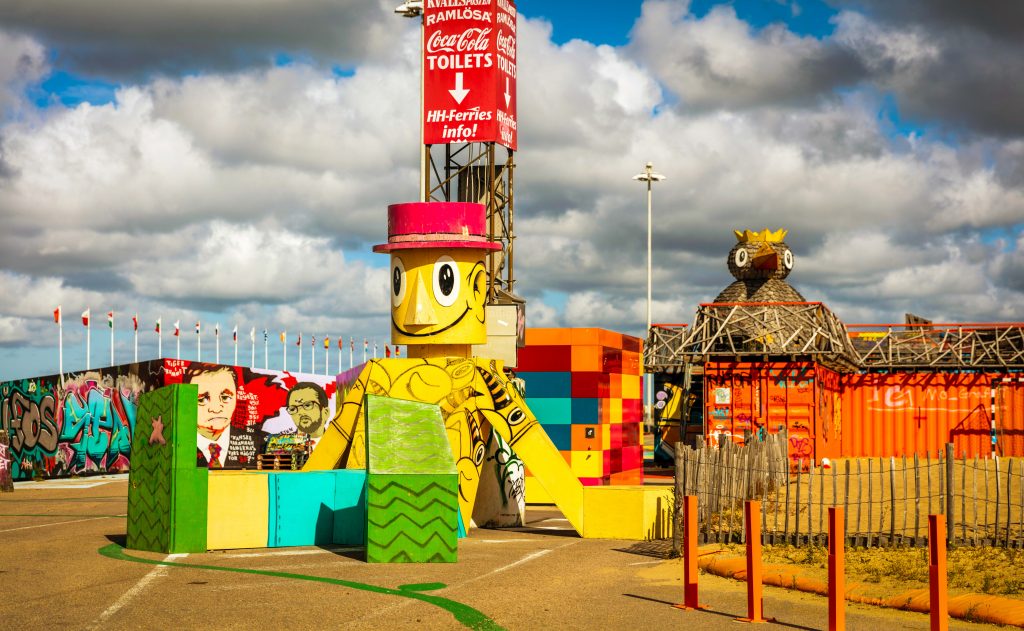Wherever you’re at in your change-making journey, there’s no doubt that you’re going to need a bit of help somewhere along the line. In fact, it’s safe to say you won’t be able to implement the drastic, much needed changes our cities need without people. Other people. All people. It’s time to find out just who should be at the top of the invitation list and how to get them on board.
We spoke to Soraya Axelsson, first-rate innovator, change-maker, leader in the realm of urbanism, and Head of H22 at the City of Helsingborg, about the bigger picture and getting the right people on board.
Let’s Set the Scene…
Helsingborg: a beautiful, lesser known (though more so now) mid-sized city in Sweden. But there’s so much more to this city than just its aesthetics. You can find out more about Helsingborg and the incredible things the city is doing to become more sustainable here, but let’s give you a run down. The city of Helsingborg is running the initiative H22 with the aim of transforming their city through innovation. With 250 ongoing innovation initiatives, about 70 different partners on board and a 35-day expo in summer 2022 to organise, Soraya and her team have been hard at work since it all began 3 years ago.
Helsingborg has focused on three main topics:
- innovative welfare and urban development,
- improving quality of life,
- reinventing city governance.
All of the projects and initiatives supported by H22, Soraya, and her team are part of achieving the wider goal of developing a smarter and more sustainable city.
So, how are they doing it? People. Lots and lots of people. If you want to start your own city-wide, innovative drive towards a more sustainable future, people will be your greatest asset. And we thought: what better way than to learn from those who are on this path and already reaping the benefits.
Onwards and Upwards
Soraya begins by telling us that the first step for H22 was deciding to do things differently and “just turning everything upside down”. Forget the conventional method of inciting change by outlining exactly what you want the outcome to be at the beginning and then finding the people to help you do so. H22 decided to just invite as many people as possible and to run the initiative like a laboratory. It was about moving onwards towards a sustainable city and upwards by doing this in a new way. The city asked themselves, “how about making this whole city a test bed, inviting people, businesses, and organisations from all over the world to be a part of developing our city?”, Soraya explains. So, they did.
Following a political decision at the highest level, they then received €25,000,000 from a dividend from the Port of Helsingborg. This money is invested in individual projects and initiatives across the city, all trialling various things in the name of sustainability. It is also being used to fund the expo in 2022.
“We believe if we really invite people to be part of developing the city, it will go much faster, and we will achieve much more.”
Who to Bring on Board?
The real question is: who not to involve? The fundamental idea of H22 is giving people the opportunity to experiment and use the city as a laboratory for sustainable measures. So there’s really no one to leave off the list. “We have made the H22 initiative a core business in the city of Helsingborg, so everybody is working with it, more or less”, Soraya explains. She goes on to list those involved in the H22 journey:

- all of the city’s nine different departments,
- all of the city’s partly and fully owned companies,
- local businesses,
- international companies,
- a range of associations,
- NGOs,
- local, national, and international academia,
- organisations such as the EU and UN,
- top management,
- politicians,
- change-makers and innovation leaders,
- citizens of Helsingborg,
- children of Helsingborg.
She specifies that it is really important to engage those at the top: “We have been working very hard to involve all of the directors, all of the CEOs, all the managers in our city.” And then, of course, there’s politics. “If you don’t have the politicians with you, if you don’t have the top management with you, it can never work”, Soraya highlights. She continues by adding that it is the entire organisation you want on board, and the only way to do this is by offering the management the services, support and tools necessary to bring everybody into it. While it might seem like an immense task, Helsingborg has proven that it’s doable – there’s more on the how-to below.
For those of you astute enough to notice, the last group on the list might seem like an odd one to need to get on board. But consider who it is you’re developing the city for? Who is the future of the city? And will it always be the same people working towards creating a more sustainable city? When you put it like that, the role of today’s kids becomes more evident. If we can get them involved today and teach them what it means to be a ‘smart city’, what sustainability is, and why it is necessary, as well as how to do all of this, then we are further future-proofing the urban environment. Why waste time, letting them figure this out once they’re already in the academic or working worlds. Check out how they got the youngsters into it below.
How to Get People on Board?
This is the all-important question. We’ve collated some of the top tips from Soraya on how to bring all of these actors on board and ultimately achieve city-wide change.
1. Structure
“You need to work structurally, you have to have a good structure when implementing a big process like this”, Soraya tells us. For H22, this involved categorising the various partners, individuals, companies, and areas engaged into nine different groups. Seems pretty logical, when you’ve got so many people involved, you need to be able to keep track of them all and how they’re contributing. H22 have categorised them as follows:

Moreover, Soraya highlights, “we work with changing the culture and the structure”. Changing the way society thinks and the culture around change and urban development is no mean feat. We need to transform the way people and organisations collaborate to make change happen. In order to transform people’s thinking, you need the apparatus in place to work seamlessly and pragmatically.
2. Fill in the Gaps
Part of having a solid structure is having a body in between the actors to keep the whole process running. In Helsingborg, this is exactly what H22, Soraya and her team are doing. Calling it a “middle-room organisation”, she elaborates on the task at hand: “Our role is to be in the spaces where nobody actually has the full ownership of a question or a challenge”. For instance, if there is a problem in urban planning, they act as a facilitator, connecting the dots, enabling communication between the necessary actors in order to solve the problem. Likewise, “if a company wants to test something in Helsingborg, they can come to us and we will try to help them find their way in the city”, she adds.
Not only does this allow the process to run smoothly, quickly and give actors the support necessary, it also means they can “push boundaries, both inside our organisation, but also towards our partners”, Soraya highlights. This challenges the creators, owners, founders, and all people on board to be as innovative as possible and come up with the most sustainable options. This “facilitator” role that Soraya describes, is crucial to being able to take leaps rather than baby steps.
3. Aim for the Top
We’ve already mentioned that it’s essential to have the top management and the politicians involved; without this you will encounter some serious issues. Helsingborg had the advantage of the political decision being the first step, meaning those politically involved at that point were already on board. However, this doesn’t mean that’s the end of the story. You’ve also got to keep them engaged as well as calculating for changes in personnel.
You need “both politicians and top management that can stand up and say ‘we need to make this change. We want to develop this city so that we can create a better future’”, Soraya encourages. She says, once you have those at the top on board, you can then work together with them to involve their organisations. i.e., the bigwigs will lead by example.
4. Sense of Urgency
This is a great idea to focus on for both generally rounding up the troops and for pinning down those at the top. “Create a sense of urgency” surrounding the process you want to implement and the changes you want to witness, Soraya advises. She goes on to explain just how you can do so. Simply explain why what you are doing matters. There is no doubt that change needs to happen and although people are gradually becoming more aware of this, we can’t quite call it a real atmosphere of emergency yet.
Soraya suggests starting by asking how and what they want to change and try to find a way of highlighting these. You could also emphasise why it is important to make them, perhaps linking this to what the city is currently doing that needs to be thrown out the window or at least adapted. Another important aspect to mention is how these transformations will benefit the current residents, future generations, the buildings, and the environment.
Encouraging people to consider how they (their work, travel, habits) and their city (the processes, projects, developments) impact the way we live and our climate, will (hopefully) spur them into action. Raise awareness, be thought-provoking and foster an atmosphere that expects change to happen and for it to happen fast.
5. Owning It
This is one of the most essential factors in developing a successful change-making process or initiative, according to Soraya. While it’s essential to have an imaginative, hard-working, and all-round top-notch central team, “you need to get the ownership as far out” as possible, our expert tells us. She adds, “what is very clear is that the best result is if we collaborate, if we co-create for real, if we do it together.” And who doesn’t want to achieve the best results?
So, ‘what do you mean by ownership?’, we hear you ask. Well, you as a leader of the project or CityChanger in the making will probably already feel invested in and empowered to make the change happen. However, you need to allow everybody else to feel this way too. If citizens, businesses, politicians, and managers feel like they can own the change, then they will be more inclined to get involved in the first place.
Once you’ve decided who you want on board, figure out how you can enable them to feel like they truly own the change too. This means making them feel part of the development and implementation and like they are really being listened to.
From the Tallest to the Smallest
The perfect example of this is H22 Kids. That’s right this isn’t just an urban development innovation project for the grown-ups: “Helsingborg is a city for people who want something. And no matter your size, everyone should feel included in the city’s development”.


Soraya explains this incredible idea came from a teacher who, while she was a huge fan of H22 and all they were doing, really wanted to find a way to involve the youngest members of society and to explain it to them on their level. Soraya elaborates: “So, she, together with my team – but it’s mostly her work, she’s fantastic – created a project and invited all of the schools in Helsingborg to join”. Right from pre-schoolers up to top of the grammar schools, pupils are creating different models of how they want to develop the city. H22 Kids will even have a huge exhibition at the expo in 2022.
There’s no denying that children have some wicked imaginations, so who knows, maybe the next bright idea will be from one of these young brains? After all, they are the future of the city so H22 was convinced that this was “necessary to ensure long-term innovation work and taking responsibility”.
Having projects specifically targeted at this young audience, listening to them, involving them, and offering them the space to be innovative with a spot at the expo, will allow the children to feel ownership of the change the city is aiming for.
6. Public and Private in Parallel
It’s probably fairly clear by now that we’re trying to involve as many people as possible from all walks of life. One way of achieving this is bridging the gap between the public and the private sector and having representation of both sides. Soraya warns, “it takes a whole lot of work, you need to be determined, it won’t always be easy, but you need to do it if you want to make change happen”.
In doing this, you will introduce “new kinds of structures and new kinds of competence” into your urban development work. This variety in who is represented will, in turn, encourage other people to jump on board too. If they can observe somebody similar to them taking part, being heard, and really making a difference, why wouldn’t they want to hop on the bandwagon too
7. Think Outside the Box
It’s time to get creative! Soraya opens our eyes with her next example: Pixla Piren. This is an innovative approach to being one of the most welcoming projects ever, we think. In Helsingborg, “part of building the smarter city is making room for ideas and fun to run free”. Consequently, the old ferry pier is open to everyone to create, basically, anything – literally whatever they want – for free.


The 692m2 pier has been divided into 10×10-metre areas, called pixels, which you can pick from and then you can set up your project or idea there. It’s all about trial and error and simply making a start. You can borrow tools on-site, there are staff around on certain days to lend a helping hand, and you can choose how long you want your pixel for: maybe just a day, maybe it’s a year-long project. Additional facilities at the pier include: free Wi-Fi; a beach; a skate park; public restrooms; indoor workshops; tables; and firepits.
So, while there are ‘conventional’ ways forward that will work, there is also room for creative licence. Consider how you can invite the most people, how to make them feel the most comfortable, and how you can give them ownership while also being on hand to help, in order to have an open, welcoming, creative space to allow ideas to flow. This is how you’ll get people on board, incite change, and have the very best ideas for a sustainable city right on your doorstep.
Change-makers, Make it Happen
Soraya sums up the H22 approach and offers some great advice regarding the engagement of all necessary parties:
“We need to give the mandate and the power to citizens, to businesses, to associations, to everybody that wants to be a part of the change: they need to get those possibilities. That is a whole new way of leading a city.”
If there is one thing to take away from this, it’s that we need to be involving everyone to really change our cities. Okay, and if there’s one other take-away, it’s that there are multiple ways to do so. Evidently, it’s not just about choosing either a top-down or bottom-up approach; it is possible to employ both and a multitude of other tactics too. One last thing we’d like to highlight: allow everyone to own the change in order to drive the change.
Check out more information on how, when, and where to incorporate participatory processes and involve citizens here or how to lead city-wide change here.


